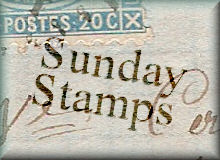
According to the description on the back of this postcard, this Prayer of the Woods sign dedicated to our forests was (is?) located in Silver Gate, Montana at the northeast entrance to Yellowstone National Park.
The author of this prayer is unknown, but it is "from the Portuguese." The words on this sign appear to have an error. It probably should say "timber that builds your boat," not "timber that holds your boat."
The author of this prayer is unknown, but it is "from the Portuguese." The words on this sign appear to have an error. It probably should say "timber that builds your boat," not "timber that holds your boat."
THE PRAYER OF THE WOODS
I am the heat of your hearth on the cold winter nights, the friendly shade screening you from the summer sun, and my fruits are refreshing draughts quenching your thirst as you journey on.
I am the beam that holds your house, the board of your table, the bed on which you lie, and the timber that builds your boat.
I am the handle of your hoe, the door of your homestead, the wood of your cradle, and the shell of your coffin.
I am the bread of kindness and the flower of beauty. Ye who pass by, listen to my prayer: Harm me not.















































